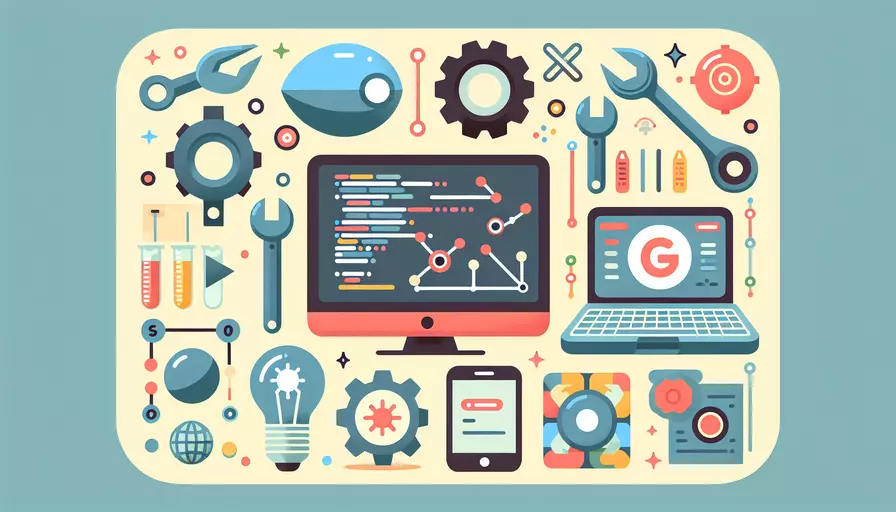
Go语言工具(Golang Tools)在开发过程中起着至关重要的作用。以下是1、Golang Tools的几个关键工具及其功能。2、Go Modules是其中最为重要的一点,因为它们使得依赖管理变得简单高效。接下来将详细介绍这些工具的用途和特点。
一、GOLANG TOOLS
- Go Modules
- Go Build
- Go Test
- Go Fmt
- Go Vet
- Go Run
- Godoc
这些工具都是Go语言生态系统的一部分,帮助开发者更高效地编写、测试、调试和维护代码。
二、GO MODULES
Go Modules是Go 1.11引入的一个依赖管理工具。在Go Modules之前,Go语言使用GOPATH来管理包依赖,但这种方法在处理依赖版本和包管理上存在一定的局限性。Go Modules的引入解决了这些问题,具体表现为以下几个方面:
- 版本控制:Go Modules允许开发者指定依赖包的具体版本,确保项目在不同环境下的一致性。
- 依赖隔离:每个项目都有自己独立的依赖环境,不再依赖全局的GOPATH。
- 简化发布:通过go.mod文件管理依赖,开发者可以更容易地发布和分享代码。
详细描述:例如,当你创建一个新的Go项目时,可以通过go mod init命令初始化模块系统,这会生成一个go.mod文件。这个文件记录了项目的名称和依赖包的版本。在开发过程中,使用go get命令可以自动更新并下载依赖包,并且这些变更会反映在go.mod文件中。这不仅简化了依赖管理,还提高了项目的可移植性和稳定性。
三、GO BUILD
Go Build是一个编译工具,用于将Go源代码编译成可执行文件。通过go build命令,开发者可以快速生成可执行文件,并在不同的平台上运行。
功能:
- 跨平台编译:支持在不同操作系统和架构之间进行交叉编译。
- 优化选项:提供多种编译选项,优化生成的二进制文件的性能。
四、GO TEST
Go Test是Go语言内置的测试工具,用于编写和运行测试用例。通过go test命令,开发者可以自动化测试代码,确保代码质量和功能正确性。
功能:
- 单元测试:支持编写单元测试来测试单个函数或方法。
- 基准测试:支持编写基准测试来评估代码的性能。
五、GO FMT
Go Fmt是一个代码格式化工具,通过go fmt命令,开发者可以自动格式化Go源代码,使其符合官方编码规范。这不仅提高了代码的可读性,还减少了团队协作中的代码风格冲突。
六、GO VET
Go Vet是一个静态分析工具,用于检查Go代码中的潜在错误。通过go vet命令,开发者可以发现代码中的常见问题,如变量未使用、类型转换错误等,从而提高代码的质量和可靠性。
七、GO RUN
Go Run是一个便捷工具,用于快速编译并运行Go源代码。通过go run命令,开发者可以在不生成二进制文件的情况下,直接运行Go程序,非常适合在开发和调试阶段使用。
八、GODOC
Godoc是一个文档生成工具,通过godoc命令,开发者可以生成和查看Go代码的文档。它不仅支持生成HTML格式的文档,还可以启动一个本地文档服务器,方便开发者浏览和查阅。
总结起来,Go语言工具(Golang Tools)在Go开发过程中起着至关重要的作用。通过使用这些工具,开发者可以更高效地进行代码编写、测试、调试和维护。特别是Go Modules,解决了依赖管理的问题,使得项目开发更加顺畅。为了更好地利用这些工具,建议开发者多加练习,并深入了解每个工具的功能和用法,以提高开发效率和代码质量。
相关问答FAQs:
1. How do you say "Go language tools" in English?
The term "Go language tools" refers to a set of software programs and utilities that are used for developing and managing applications written in the Go programming language. In English, we simply refer to these tools as "Go language tools." The term "Go" refers to the programming language itself, which was created by Google. These tools are designed to enhance the development process and improve productivity for Go programmers.
2. What are the commonly used tools for Go language development?
When it comes to developing applications in the Go programming language, there are several commonly used tools that can greatly aid the development process. Some of these tools include:
-
Go Compiler: The Go compiler, also known as "go build," is responsible for compiling Go source code into executable binaries. It ensures that the code is syntaxically correct and produces a binary that can be run on different platforms.
-
Go Package Manager: Go uses a package manager called "go get" to manage dependencies and download external packages. It simplifies the process of importing and using third-party libraries in Go projects.
-
Go Formatter: The Go formatter, known as "gofmt," is a tool used to automatically format Go source code according to the official Go coding style. It enforces a consistent and readable code style across different projects.
-
Go Linter: Go linters, such as "golint" or "golangci-lint," analyze Go code for potential errors, stylistic issues, and code smells. They provide recommendations and guidelines to improve code quality and maintainability.
-
Go Testing Framework: Go has its own built-in testing framework, which allows developers to write unit tests for their Go code. The "go test" command is used to run these tests and ensure the correctness of the code.
-
Go Documentation Generator: The "go doc" tool generates documentation for Go code based on comments and annotations in the source code. It helps developers to automatically generate documentation and provides a way for other developers to understand how to use the code.
These are just a few examples of the tools commonly used in Go language development. There are many more available, each serving a specific purpose to improve the development experience.
3. How can Go language tools improve the development process?
Go language tools play a crucial role in improving the development process for applications written in the Go programming language. Here are some ways in which these tools can enhance productivity and efficiency:
-
Faster Compilation: The Go compiler is known for its fast compilation speed, allowing developers to quickly iterate on their code and see the results in real-time. This helps in speeding up the development process and reducing the feedback loop.
-
Dependency Management: The Go package manager simplifies the process of managing dependencies and importing external packages. It automatically downloads and installs the required packages, making it easy to integrate third-party libraries into projects.
-
Code Formatting: The Go formatter ensures that the code follows a consistent and readable style. It automatically formats the code according to the official Go coding style, eliminating the need for manual formatting and reducing the chances of style-related bugs.
-
Code Quality: Go linters analyze the code for potential errors, style violations, and code smells. They provide suggestions and recommendations to improve the quality and maintainability of the code, helping developers write cleaner and more efficient code.
-
Testing: Go's built-in testing framework allows developers to write unit tests for their code. These tests can be easily executed using the "go test" command, ensuring the correctness of the code and providing a safety net for future changes.
-
Documentation: The Go documentation generator helps in automatically generating documentation for Go code. This makes it easier for developers to understand how to use the code and encourages the practice of writing self-documented code.
By leveraging these tools, developers can streamline the development process, catch errors early, and write high-quality, maintainable code. Overall, Go language tools contribute to a more efficient and productive development experience.
文章标题:go语言工具英文怎么说,发布者:不及物动词,转载请注明出处:https://worktile.com/kb/p/3503255

 微信扫一扫
微信扫一扫  支付宝扫一扫
支付宝扫一扫 